Effective STL: 50 Specific Ways to Improve Your Use of Standard Template Library
Content
Containers
1. Choose your containers with care
2. Beware illusion of container-independent code
3. Make copying cheap & correct for objects in containers
4. Call empty instead of checking size() against zero
5. Prefer range member functions to their single-element counterparts
6. Be alert for C++'s most vexing parse
7. When using containers of newed pointers, remember to delete pointers before container is destroyed
8. Never create containers of auto_ptrs
9. Choose carefully among erasing options
10. Be aware of allocator conventions & restrictions
11. Understand legitimate uses of custom allocators
12. Have realistic expectations about thread safety of STL containers
Vector & String
13. Prefer vector & string to dynamically allocated arrays
14. Use reserve to avoid unnecessary reallocations
15. Be aware of variations in string implementations
16. Know how to pass vector & string data to legacy APIs.
17. Use "swap trick" to trim excess capacity
18. Avoid using vector
Associative Containers
19. Understand difference between equality & equivalence
20. Specify comparison types for associative containers of pointers
21. Always have comparison functions return false for equal values
22. Avoid in-place key modification in set & multiset
23. Consider replacing associative containers with sorted vectors
24. Choose carefully between map::operator[] & map-insert when efficiency is important
25. Familiarize yourself with nonstandard hashed containers
Iterators
26. Prefer iterator to const iterator, reverse_iterator & const_reverse_iterator
27. Use distance & advance to convert container's const_iterators to iterators
28. Understand how to use reverse_iterator's base iterator
29. Consider istreambuf_iterators for character-by-character input
Algorithms
30. Make sure destination ranges are big enough
31. Know your sorting options
32. Follow remove-like algorithms by erase if you really want to remove something
33. Be wary of remove-like algorithms on containers of pointers
34. Note which algorithms expect sorted ranges
35. Implement simple case-insensitive string comparisons via mismatch or lexicographical compare
36. Understand proper implementation of copy_if
37. Use accumulate or for_each to summarize ranges
Functors, Functor Classes, Functions, etc.
38. Design functor classes for pass-by-value
39. Make predicates pure functions
40. Make functor classes adaptable
41. Understand reasons for ptr_fun, mem_fun & mem_fun_ref
42. Make sure less means operator<
Programming with STL
43. Prefer algorithm calls to hand-written loops
44. Prefer member functions to algorithms with same names
45. Distinguish among count, find, binary search, lower_bound, upper_bound & equal_range
46. Consider function objects instead of functions as algorithm parameters
47. Avoid producing write-only code
48. Always #include proper headers
49. Learn to decipher STL-related compiler diagnostics
50. Familiarize yourself with STL-related web sites
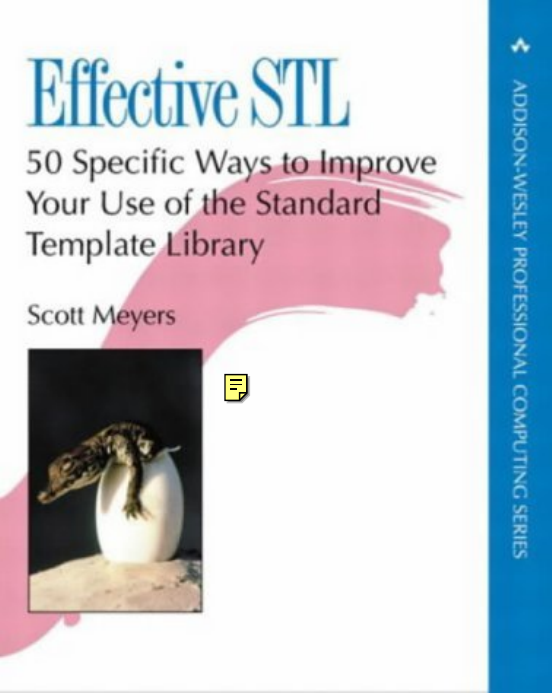
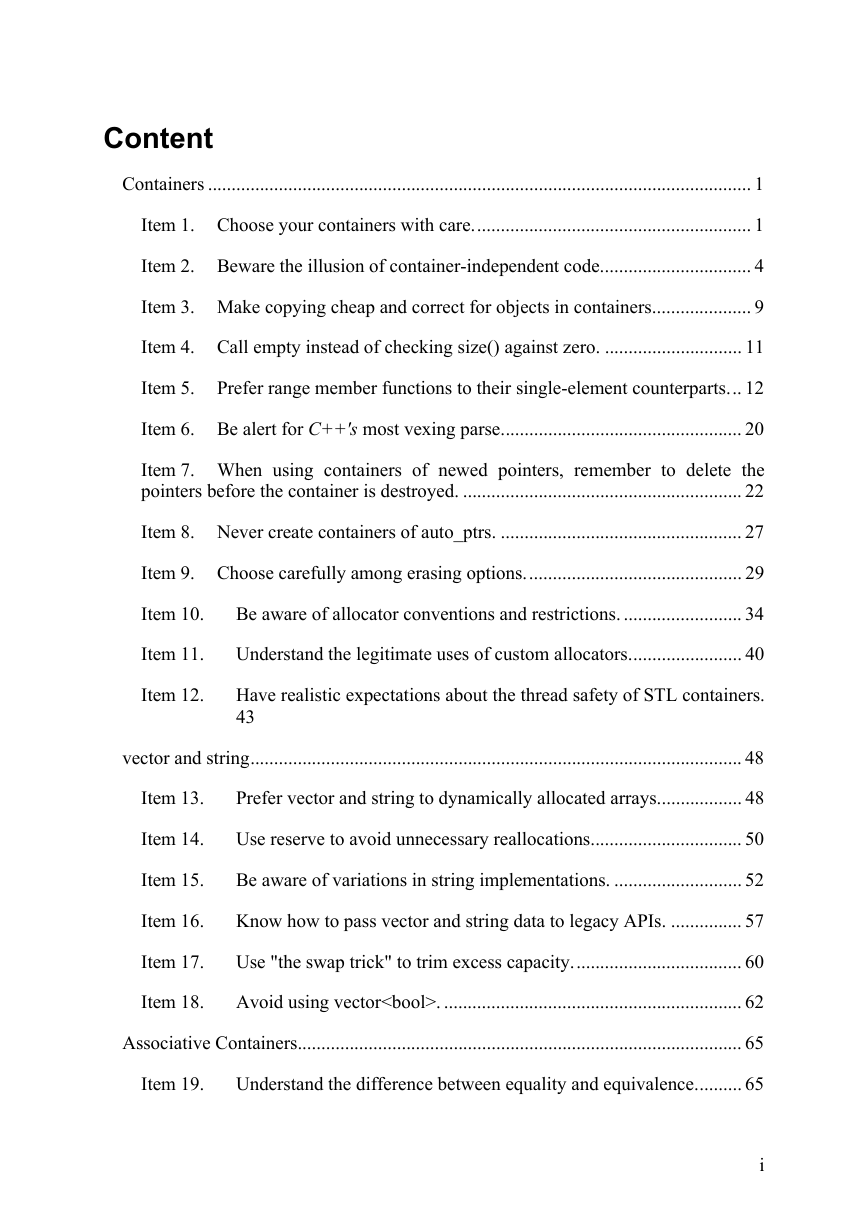
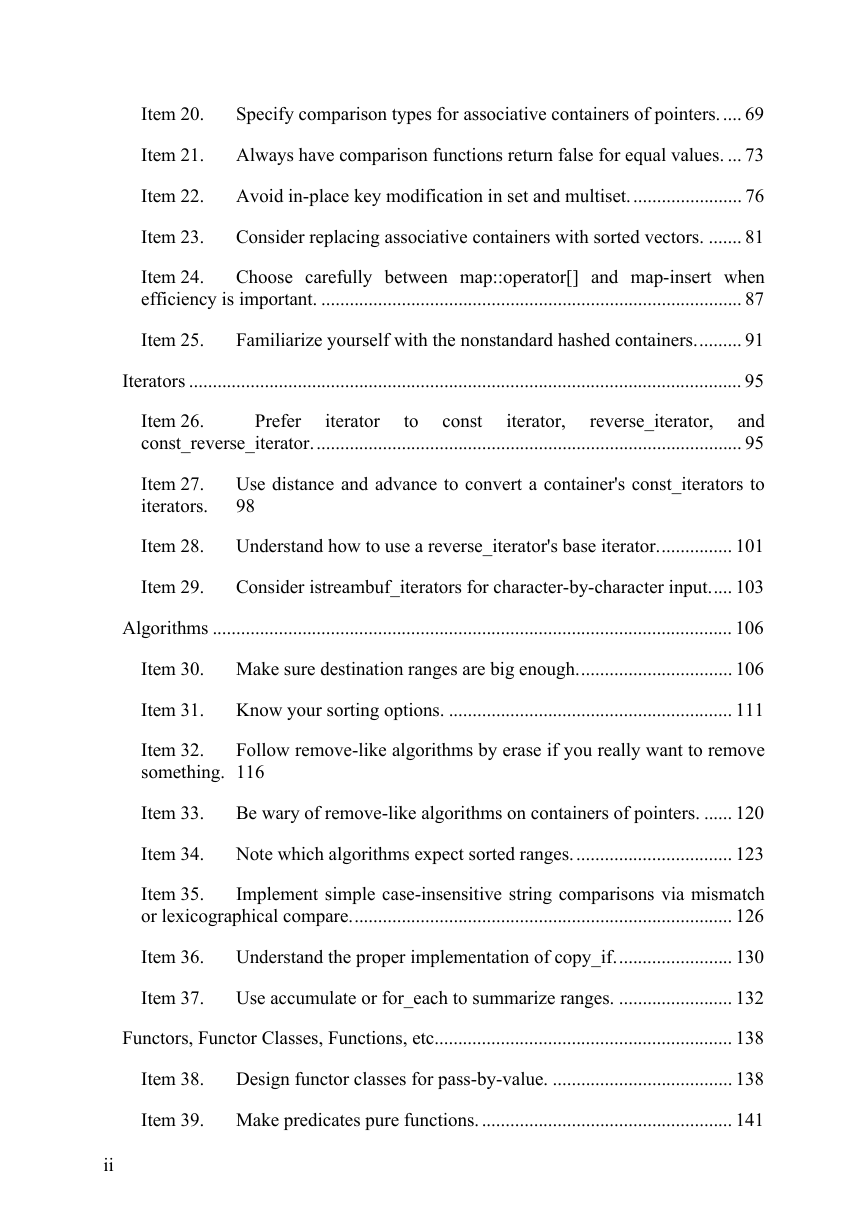
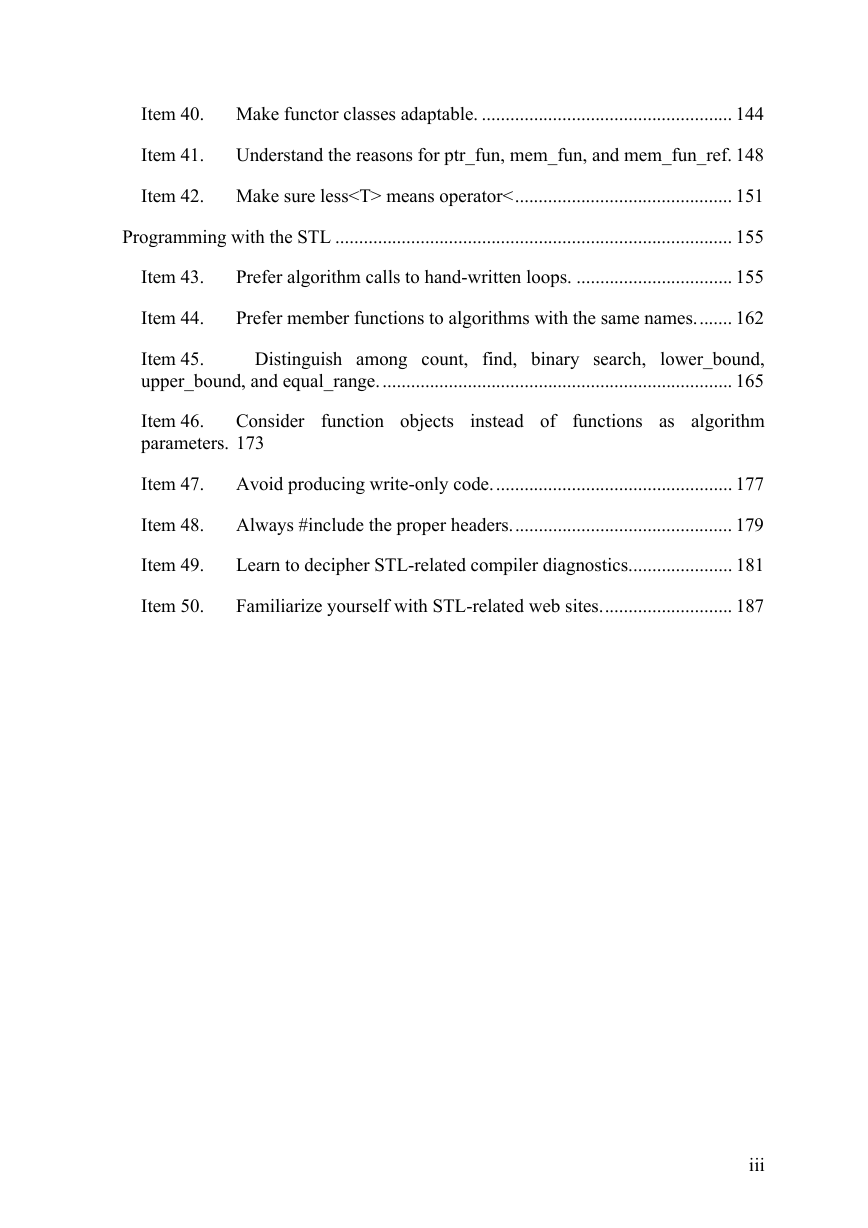

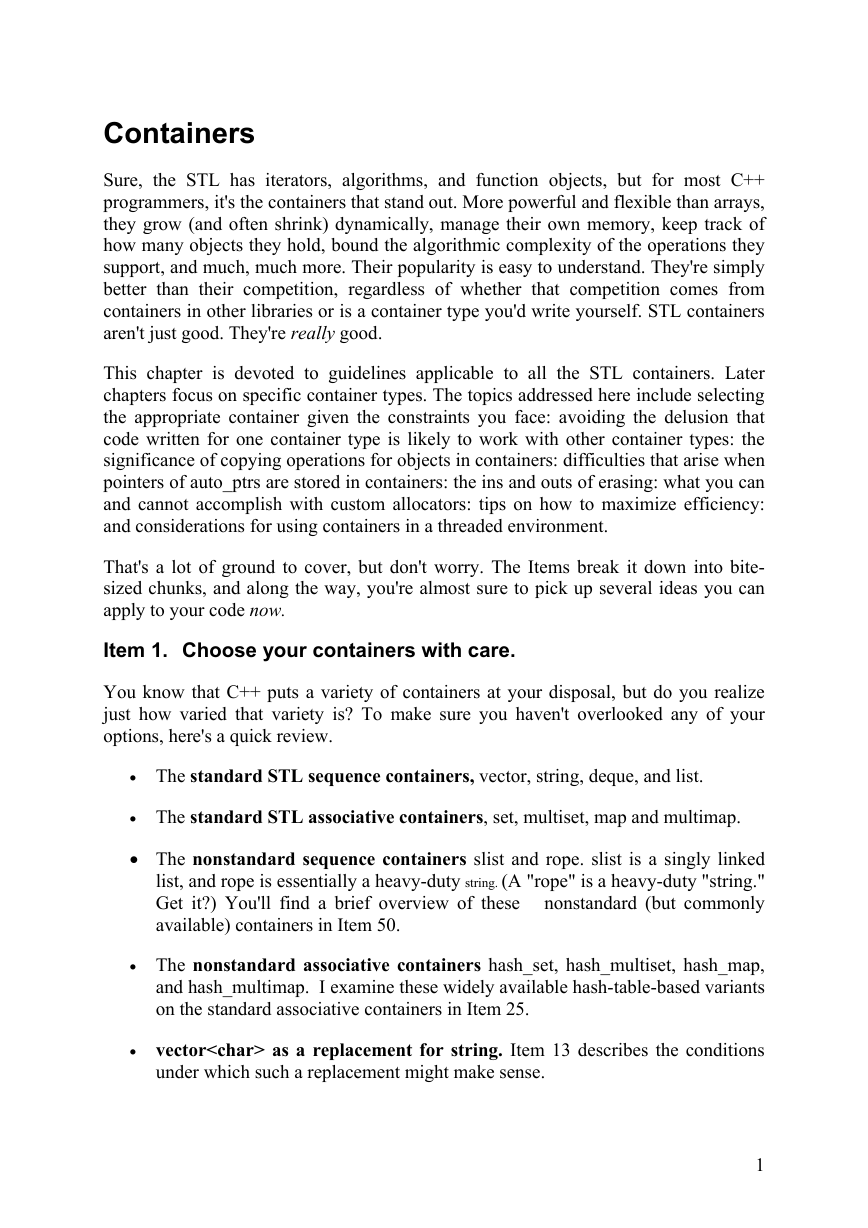
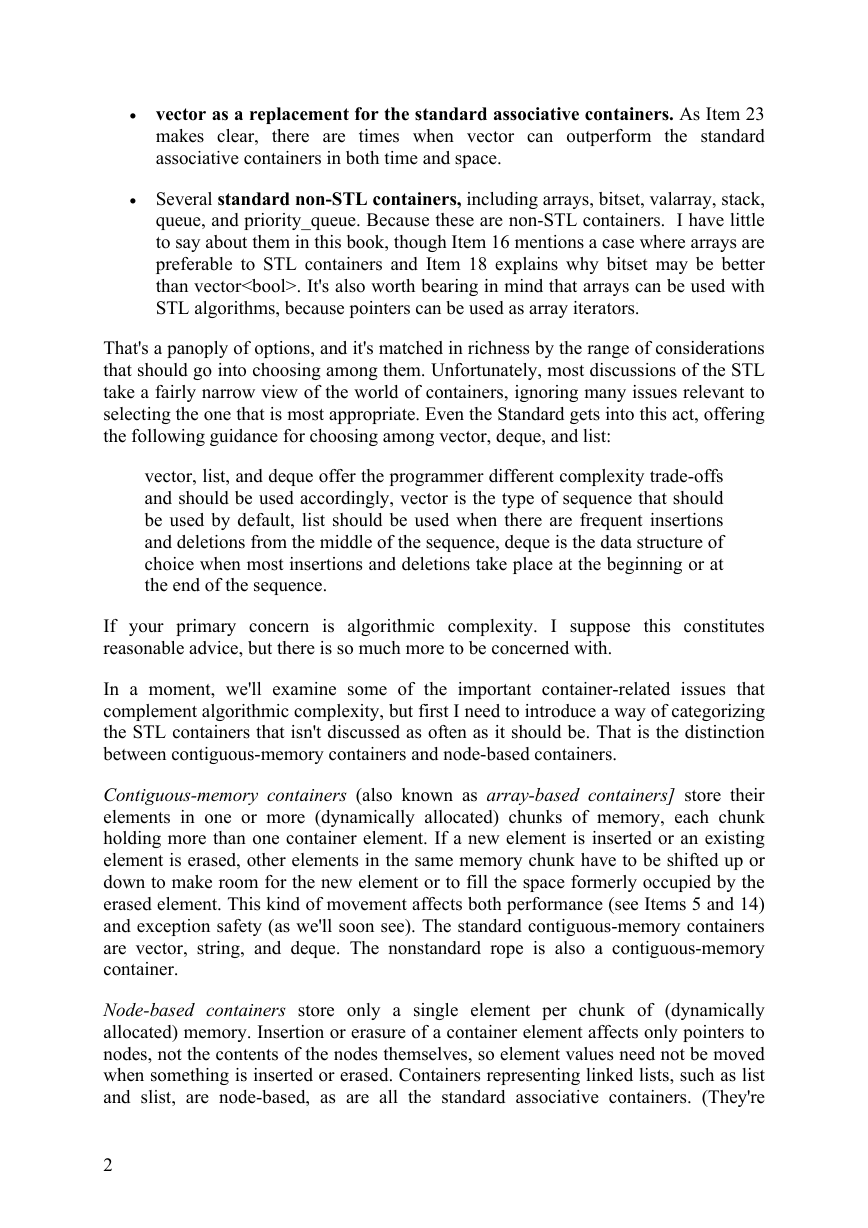
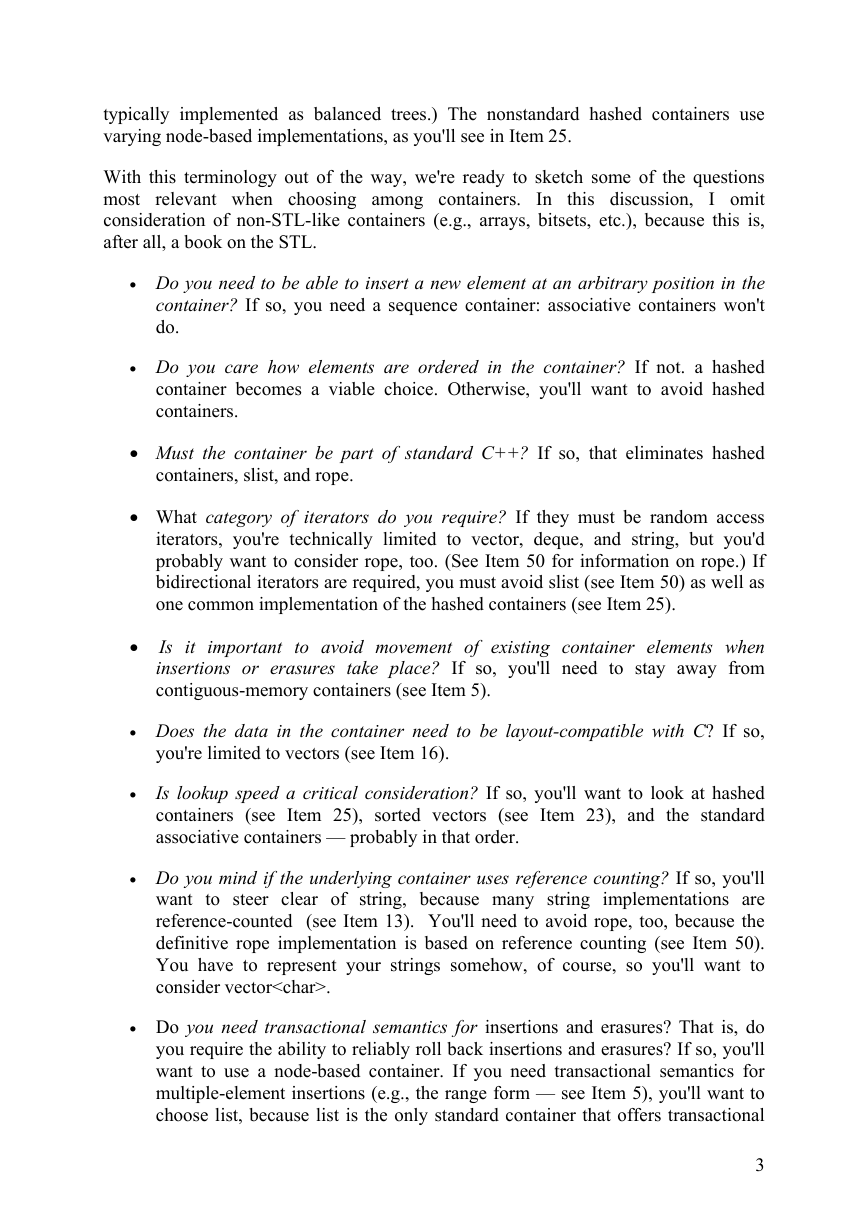








 2023年江西萍乡中考道德与法治真题及答案.doc
2023年江西萍乡中考道德与法治真题及答案.doc 2012年重庆南川中考生物真题及答案.doc
2012年重庆南川中考生物真题及答案.doc 2013年江西师范大学地理学综合及文艺理论基础考研真题.doc
2013年江西师范大学地理学综合及文艺理论基础考研真题.doc 2020年四川甘孜小升初语文真题及答案I卷.doc
2020年四川甘孜小升初语文真题及答案I卷.doc 2020年注册岩土工程师专业基础考试真题及答案.doc
2020年注册岩土工程师专业基础考试真题及答案.doc 2023-2024学年福建省厦门市九年级上学期数学月考试题及答案.doc
2023-2024学年福建省厦门市九年级上学期数学月考试题及答案.doc 2021-2022学年辽宁省沈阳市大东区九年级上学期语文期末试题及答案.doc
2021-2022学年辽宁省沈阳市大东区九年级上学期语文期末试题及答案.doc 2022-2023学年北京东城区初三第一学期物理期末试卷及答案.doc
2022-2023学年北京东城区初三第一学期物理期末试卷及答案.doc 2018上半年江西教师资格初中地理学科知识与教学能力真题及答案.doc
2018上半年江西教师资格初中地理学科知识与教学能力真题及答案.doc 2012年河北国家公务员申论考试真题及答案-省级.doc
2012年河北国家公务员申论考试真题及答案-省级.doc 2020-2021学年江苏省扬州市江都区邵樊片九年级上学期数学第一次质量检测试题及答案.doc
2020-2021学年江苏省扬州市江都区邵樊片九年级上学期数学第一次质量检测试题及答案.doc 2022下半年黑龙江教师资格证中学综合素质真题及答案.doc
2022下半年黑龙江教师资格证中学综合素质真题及答案.doc